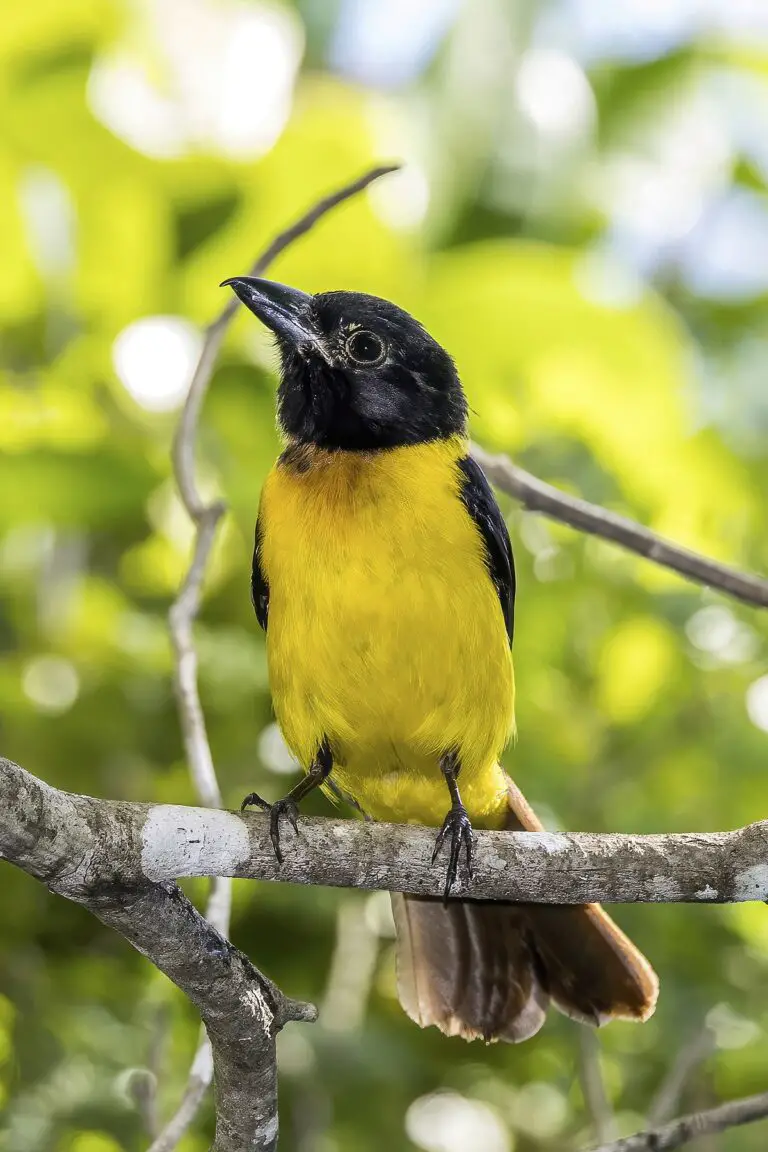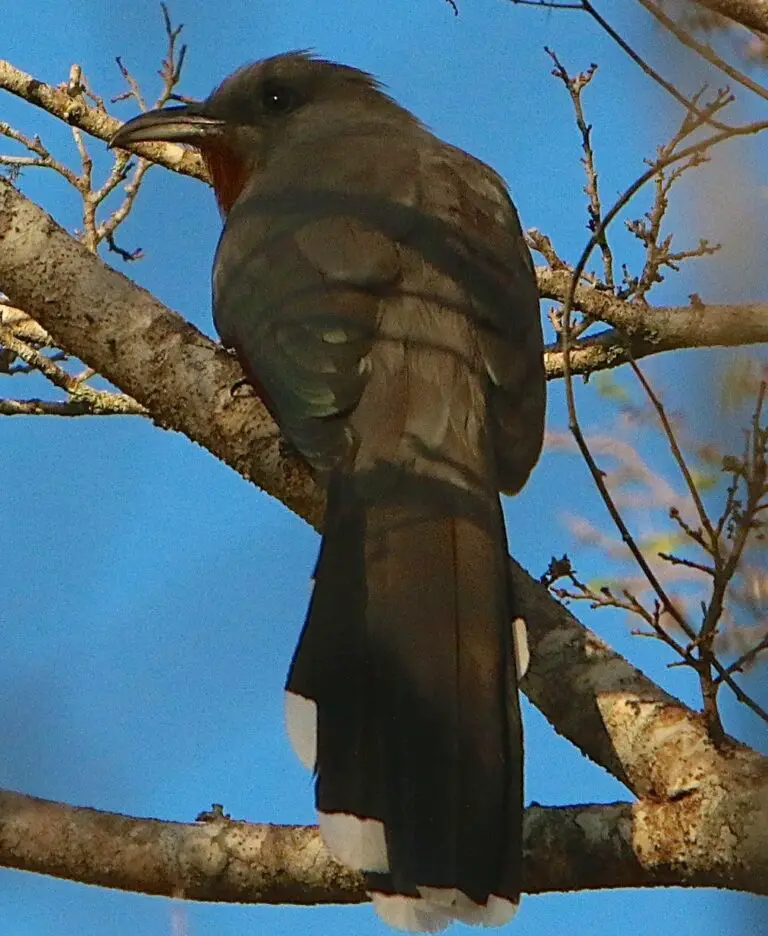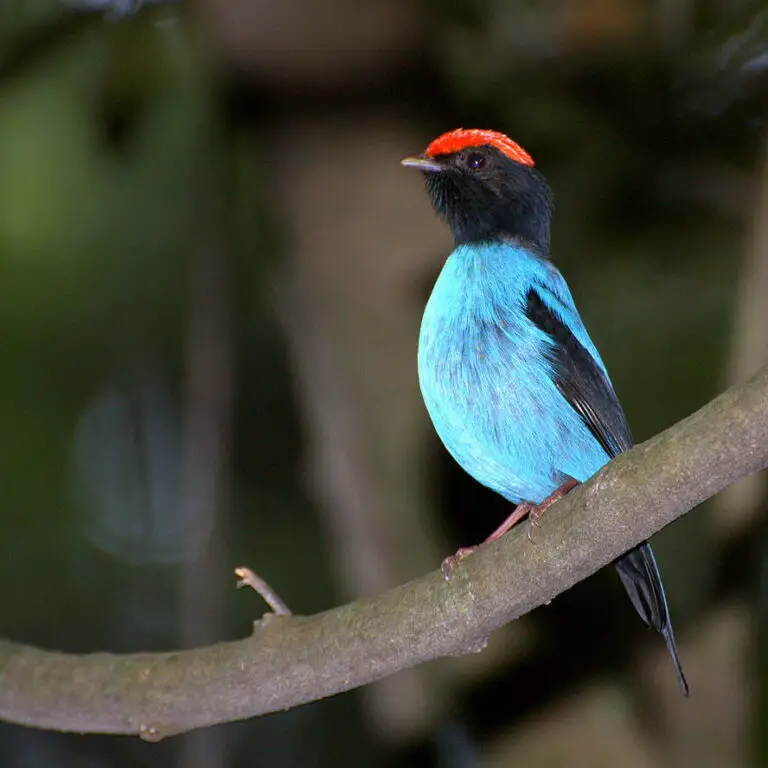Swallow (Tachycineta bicolor, Atticora fasciata)
“Swallows have aerodynamic bodies for hunting in flight”
Swallow Scientific Classification:
- Kingdom: Animalia
- Phylum: Chordata
- Class: Aves
- Order: Passeriformes
- Family: Hirundinidae
- Genus: Tachycineta (e.g., Tachycineta bicolor), Atticora (e.g., Atticora fasciata), and more
Swallow Conservation Status:
- Swallows can have varying conservation statuses depending on the species. For example:
- Tachycineta bicolor (Tree Swallow) – Least Concern
- Atticora fasciata (White-banded Swallow) – Least Concern
Swallow Locations:
- Swallows are distributed across various continents and regions, including:
- Africa
- Asia
- Central America
- Eurasia
- Europe
- North America
- Oceania
- South America
Each species within the family Hirundinidae may have specific habitat preferences and ranges within these continents and regions.
Here’s a comprehensive compilation of swallow facts:
Common Name: Swallow
Scientific Name: Various species within the family Hirundinidae, including Tachycineta bicolor and Atticora fasciata.
Number of Species: 89
Location: Found on every continent except Antarctica.
Habitat: Open grasslands and woodlands.
Nesting Location: Mud nests, cavities, tunnels.
Migratory: Yes.
Prey: Grasshoppers, crickets, caterpillars, spiders, worms, and snails.
Main Prey: Insects.
Diet: Insectivore.
Lifestyle: Diurnal.
Group Behavior: Semi-social.
Predators: Hawks, falcons, owls, and kestrels.
Biggest Threat: Forest loss and invasive species.
Fun Fact: Swallows have aerodynamic bodies for hunting in flight.
Estimated Population Size: 290 million to 487 million
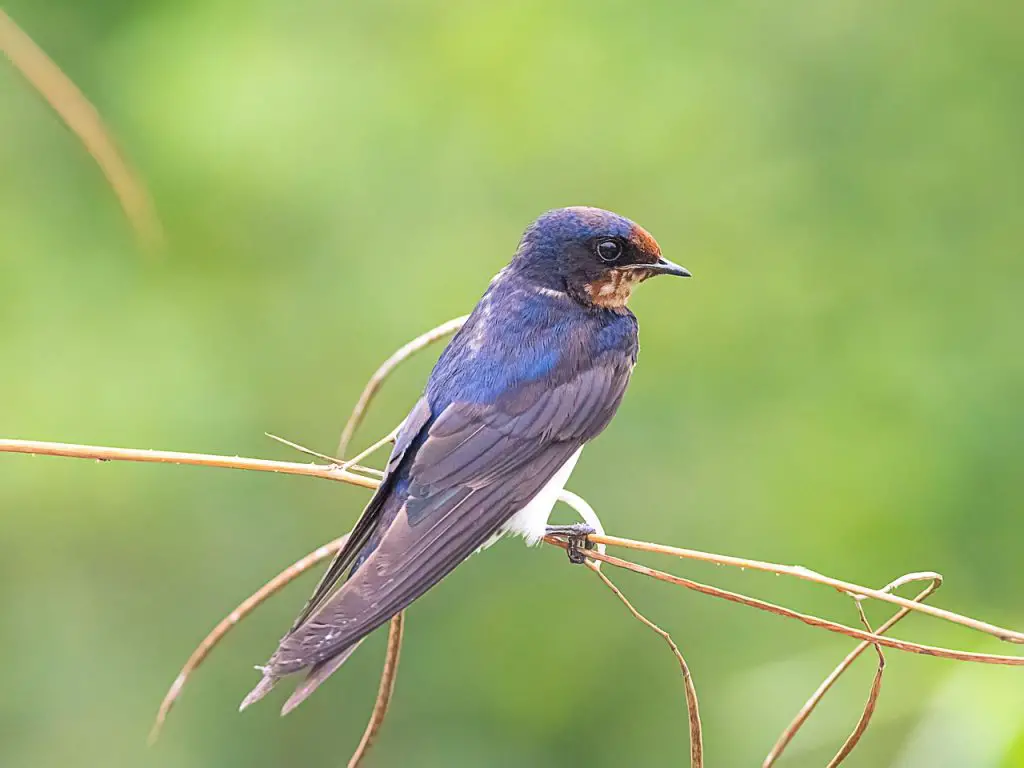
Distinctive Features:
- Streamlined bodies and pointed wings.
- Long eyes and wide gapes.
- Specialized for aerodynamic flight.
Physical Characteristics:
- Color: Blue, white, green, chestnut.
- Skin Type: Feathers.
- Lifespan: 2 to 16 years.
- Weight: 0.35 to 2.12 ounces.
- Length: 3.9 to 9.4 inches.
- Age of Sexual Maturity: One year.
- Venomous: No.
Reproduction:
- Name of Young: Chicks.
- Incubation Period: 10 to 21 days.
- Age of Fledgling: 3 weeks.
Swallows are fascinating birds known for their aerial agility and insect-catching prowess. They play vital roles in ecosystems by controlling insect populations.
Summary
Swallows, part of the Hirundinidae family, are a remarkable group of birds known for their distinctive features and global presence. With a whopping 89 species under their wing, they’re quite the diverse bunch, spreading across every continent except chilly Antarctica. You’ll spot these agile flyers in all sorts of open spaces, whether it’s grasslands, open woodlands, or near water bodies.
Now, when it comes to their social life, swallows have quite the spectrum. Some are real social butterflies, mingling in big groups even outside the breeding season. But then there are the more solitary types, content with just their monogamous pairings. And let’s talk about their habits! These birds are busy little things during the day, darting around to snag insects mid-air for their meals.
Nesting-wise, swallows are quite crafty. They’ll fashion cup-shaped homes out of mud or plant materials, often sticking them onto cliffs, buildings, or tree branches. And when it’s breeding time, both parents chip in, taking turns keeping the eggs warm and tending to the hatchlings.
Migration is another feat for these birds. Many species travel far and wide between their breeding and wintering grounds, crossing continents and oceans like seasoned travelers. Their ability to find their way back to specific spots each year is nothing short of impressive.
So, whether you’re curious about where they live, what they eat, or how they socialize, there’s plenty to learn about the fascinating world of swallows.
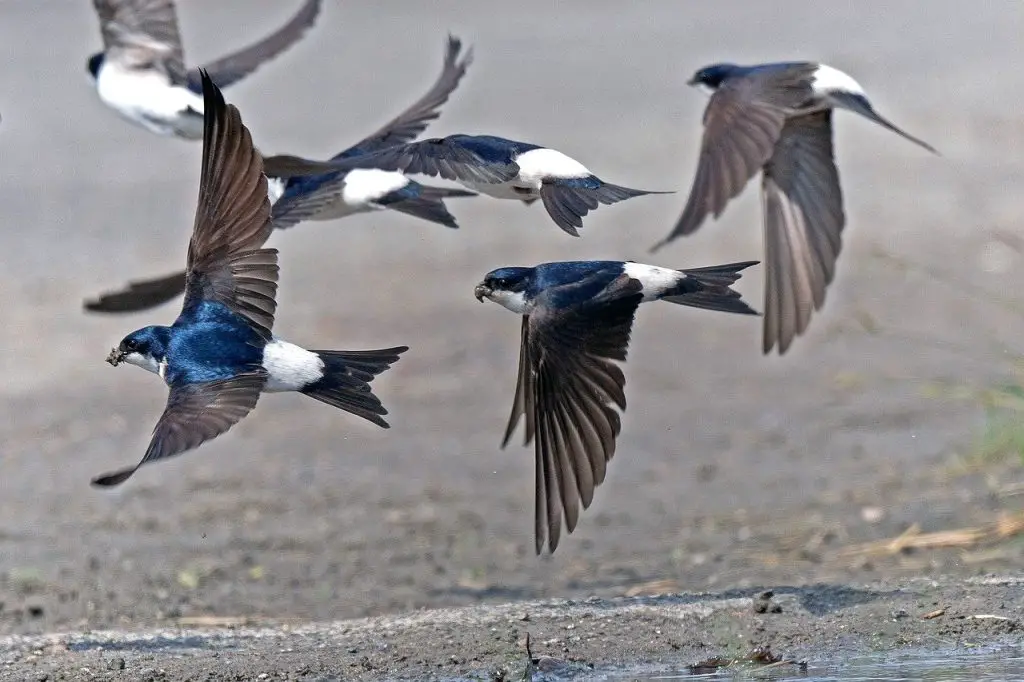
5 Amazing Facts
Here are five fascinating facts about swallows:
- Aerodynamic Masters: Swallows boast unique aerodynamic bodies, specially adapted for hunting insects mid-flight. Unlike many other passerine species, their sleek design allows for swift, agile maneuvers in the air.
- Vocal Virtuosos: These birds are not shy when it comes to expressing themselves. With their melodious twittering, swallows communicate excitement, socialize with their peers, and issue warnings to their fellow flock members about potential intruders.
- Unlikely Visitors: While Antarctica may not be their typical hangout spot, some swallow species are known to make surprise appearances there as common vagrants. These unexpected visitors add a touch of avian diversity to the icy landscape and its surrounding islands.
- Niche Foragers: Swallows are not one-size-fits-all when it comes to feeding habits. Some species exhibit niche specialization, with individuals breaking apart into different feeding niches. While some prefer to scour the ground for insects, others take to higher altitudes for their meals, showcasing their adaptability.
- Feisty Protectors: Don’t mess with a swallow’s nest! These birds are fiercely defensive of their nesting sites and will not hesitate to lunge at intruders to protect their young. Their bold behavior serves as a powerful deterrent against potential threats to their offspring.
Where to Find the Swallow
Swallows are truly versatile birds, found on nearly every continent except Antarctica, with some species even venturing to remote islands and occasionally flying as far as Antarctica. Their migratory habits are impressive, with populations breeding in the northern hemisphere and wintering in the southern. However, those residing in tropical regions may opt for a more sedentary lifestyle.
These adaptable birds make themselves at home in a wide array of habitats, from grasslands and open woodlands to savannas, mangroves, marshes, scrublands, and even agricultural fields. Urban environments are no exception, as swallows effortlessly blend into cityscapes. They’re equally comfortable at sea level or in high alpine terrain, readily adapting to diverse landscapes, including manmade structures.
When it comes to nesting, New World swallow species favor cavities, while their Old World counterparts are skilled mud-nest builders. Regardless of their nesting style, swallows prioritize structures with overhead protection from the elements and potential predators. Both male and female swallows work together diligently, gathering materials and shaping their nests. Some species even take it a step further, excavating tunnels as a team effort.
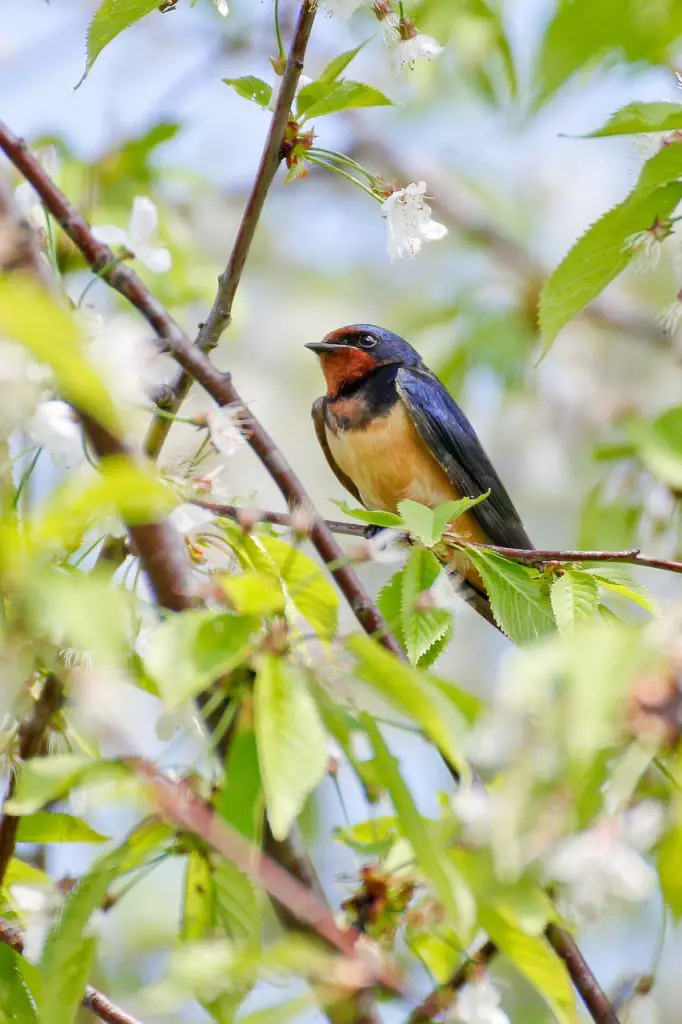
Scientific Name
The swallow, belonging to the Passeriformes order, stands out among its fellow passerine birds due to its unique morphological features, especially its aerodynamic body ideal for hunting insects while in flight.
Within the Hirundinidae family, there are a staggering 21 genera encompassing a total of 89 species. Here’s a glimpse into the diverse world of these avian marvels:
Cliff-Nesting Swallows:
- American cliff swallow (Petrochelidon pyrrhonota)
- Cave swallow (Petrochelidon fulva)
- Chestnut-collared swallow (Petrochelidon rufocollaris)
- Preuss’s cliff swallow (Petrochelidon preussi)
- Red-throated cliff swallow (Petrochelidon rufigula)
- Red Sea cliff swallow (Petrochelidon perdita)
- South African cliff swallow (Petrochelidon spilodera)
- Streak-throated swallow (Petrochelidon fluvicola)
- Fairy martin (Petrochelidon ariel)
- Tree martin (Petrochelidon nigricans)
Forest Swallows:
- Forest swallow (Atronanus fuliginosus)
African and Tropical Asian Swallows:
- Red-breasted swallow (Cecropis semirufa)
- Mosque swallow (Cecropis senegalensis)
- Lesser striped swallow (Cecropis abyssinica)
- Greater striped swallow (Cecropis cucullata)
- Red-rumped swallow (Cecropis daurica)
- West African swallow (Cecropis domicella)
- Sri Lanka swallow (Cecropis hyperythra)
- Striated swallow (Cecropis striolata)
- Rufous-bellied swallow (Cecropis badia)
House Martins:
- Common house martin (Delichon urbicum)
- Siberian house martin (Delichon lagopodum)
- Asian house martin (Delichon dasypus)
- Nepal house martin (Delichon nipalense)
And the list goes on, encompassing various types such as Barn swallows, Crag Martins, Rough-Winged Swallows, Swallows of the Andes Mountains, Swallows of the Neotropics, South American Swallows, Swallows of the Americas, Tunnel-Nesting Martins, Saw-Wings, and River Martins. Each species adds its unique flavor to the fascinating world of swallows, showcasing their adaptability and diversity across different continents and habitats.
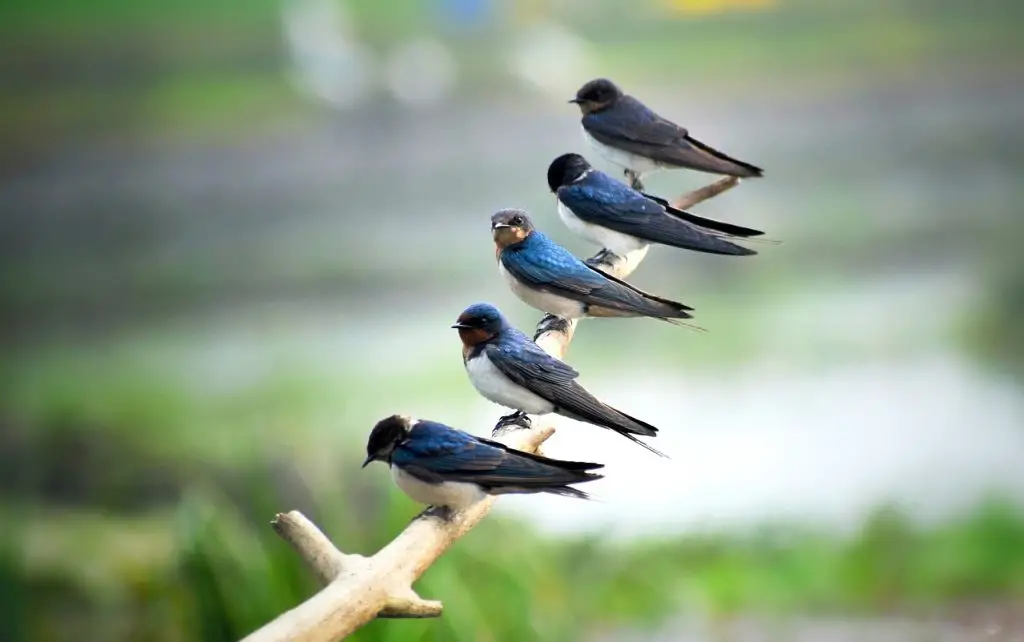
Size, Appearance, & Behavior
The swallow, a petite passerine songbird, measures between 3.9 to 9.4 inches and weighs a mere 0.35 to 2.12 ounces, boasting a wingspan of 11 to 13 inches. Despite their classification as passerine birds, their bodies are finely tuned for hunting on the wing. Sporting streamlined frames, elongated pointed wings, and eyes reminiscent of raptors, swallows are built for aerial acrobatics. Their short bills, wide gapes, and lengthy tails further enhance their airborne prowess. Both males and females flaunt glossy dark blue or green plumage above, contrasted by heavily streaked white or rufus-colored feathers below, while juveniles don slightly duller versions of the adult plumage.
Social dynamics among swallows vary, with some species opting for solitary lifestyles while others engage in colonial nesting and assemble in large flocks outside of the breeding season. Their repertoire of calls and songs is diverse, often resembling melodious twittering. These vocalizations serve myriad purposes, from expressing excitement to communicating with mates and fellow species members or warning off potential intruders. Swallows leverage their formidable flying skills not only for hunting but also to impress potential mates.
In terms of migration, swallows are seasoned travelers, undertaking extensive journeys across vast distances. With a global distribution and expansive range, they exhibit remarkable versatility. Take the barn swallow, for example, breeding across much of the northern hemisphere and wintering in the southern hemisphere. Some species even display vagrant behavior, venturing to remote islands and even venturing as far as the Antarctic. Such migratory feats underscore the remarkable adaptability and resilience of these captivating avian wonders.
Diet
Swallows are enthusiastic insectivores, with their diet predominantly comprising grasshoppers, crickets, caterpillars, spiders, worms, and snails. However, their culinary preferences extend beyond just insects, as some species also indulge in berries, plant matter, and seeds. While their primary mode of foraging involves swift aerial maneuvers, you might catch them occasionally swooping down to snatch prey from branches or the ground.
What’s particularly fascinating is how certain swallow species exhibit cooperative feeding behaviors, breaking apart into distinct niches. This means that while some individuals scour the ground for tasty morsels, others take to higher elevations in search of delectable treats. This adaptive feeding strategy not only ensures a diverse diet but also maximizes efficiency in capturing prey, showcasing the ingenuity and resourcefulness of these remarkable birds.
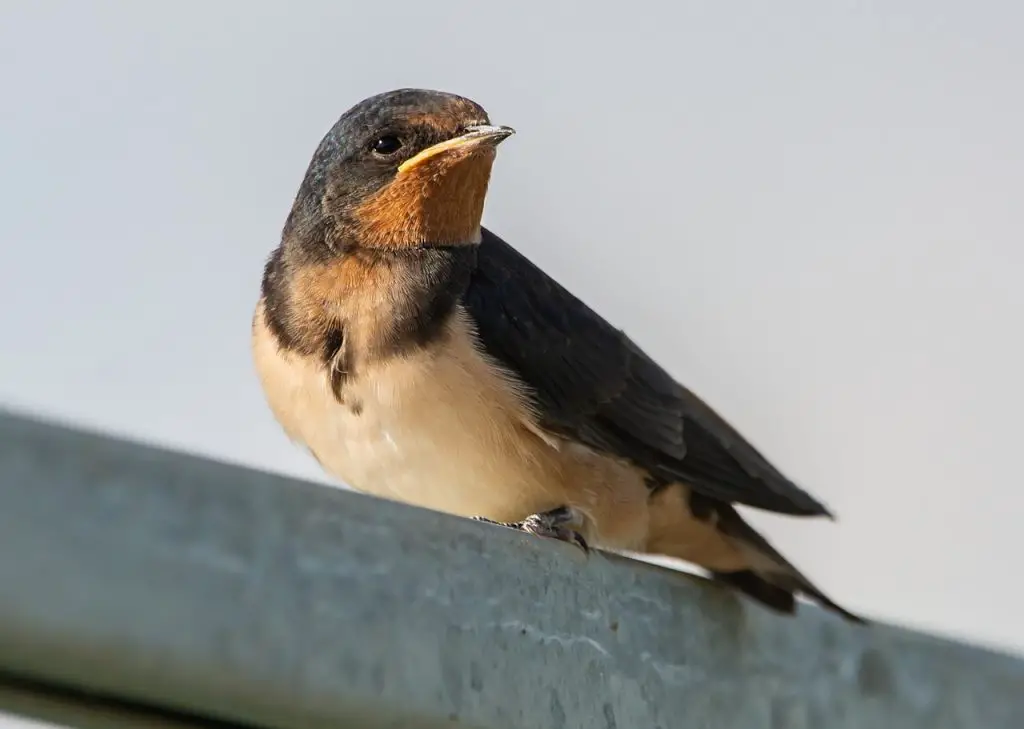
Predators, Threats, and Conservation Status
The swallow family faces various threats, with habitat loss being a significant concern. One of the most distressing cases is that of the critically endangered white-eyed river martin, which hasn’t been officially sighted since 1978, raising fears of its extinction. Breeding on river banks, this species has suffered from the decline of its habitat in Southeast Asia.
In addition, the golden swallow is classified as “Vulnerable,” while the Bahama swallow is deemed “Endangered,” primarily due to forest loss and the presence of invasive species in their habitats. Fortunately, most other swallow species have managed to maintain stable populations and are listed as “Least Concern.”
Despite their aerial agility, swallows face predation from a variety of predators. Hawks, falcons, owls, and kestrels pose significant threats to these birds. Additionally, their nests are targeted by a range of predators including grackles, rats, weasels, squirrels, raccoons, bobcats, snakes, domestic cats, bullfrogs, and fish. Despite their small size, swallows are formidable defenders of their nests, readily lunge at intruders, and aggressively chase away any threats that come too close.
Reproduction, Young, and Molting
Swallows are known for their strong pair bonds, with many species forming monogamous pairs and sticking together for life. However, some may engage in polygamous behavior, taking multiple partners. When it comes to reproduction, females typically lay clutches of two to five white eggs, which they diligently incubate for a period ranging from 10 to 21 days.
Interestingly, swallow chicks take longer to develop compared to other passerine birds. After hatching, they spend about three weeks in the nest under the care of both parents. During this time, the parents work tirelessly to feed and nurture their young until they are ready to fledge. Despite leaving the nest, the young swallows often return to roost even after they’ve become capable of sustained flight.
Swallows generally reach sexual maturity around the age of one year, although this can vary slightly among species. With a lifespan ranging from 2 to 16 years, these birds embark on a journey of nesting, parenting, and nurturing future generations, contributing to the vitality of their populations.
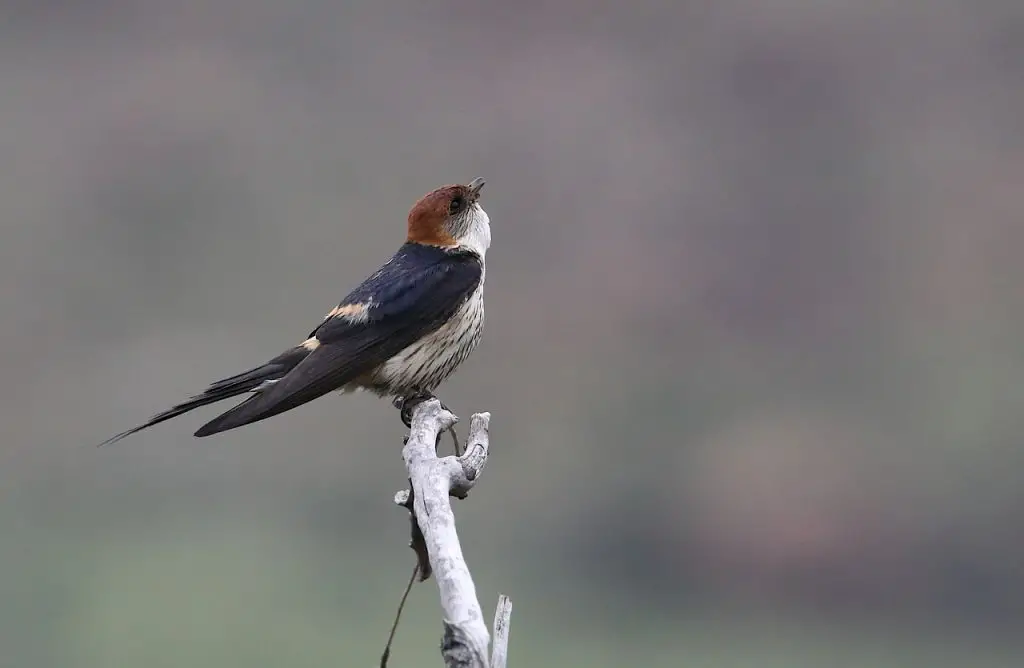
Population
While the exact global population of swallow birds remains uncertain, barn swallows, in particular, represent a substantial portion, with estimates ranging from 290 million to 487 million mature individuals. However, despite these seemingly robust numbers, certain swallow populations may be experiencing slight declines. These declines are often attributed to changes in agricultural practices, which can lead to a reduction in suitable nesting sites for these avian migrants. As a result, conservation efforts aimed at preserving and enhancing swallow habitats are crucial for ensuring the continued health and stability of these remarkable bird populations.
Conclusion
Swallows are captivating birds known for their aerial prowess, diverse species, and significant ecological roles as insectivores. While many species exhibit remarkable adaptability and resilience, some face threats such as habitat loss and declining nesting sites. Understanding and conserving swallow habitats is essential for maintaining the health and stability of these vital avian populations.
